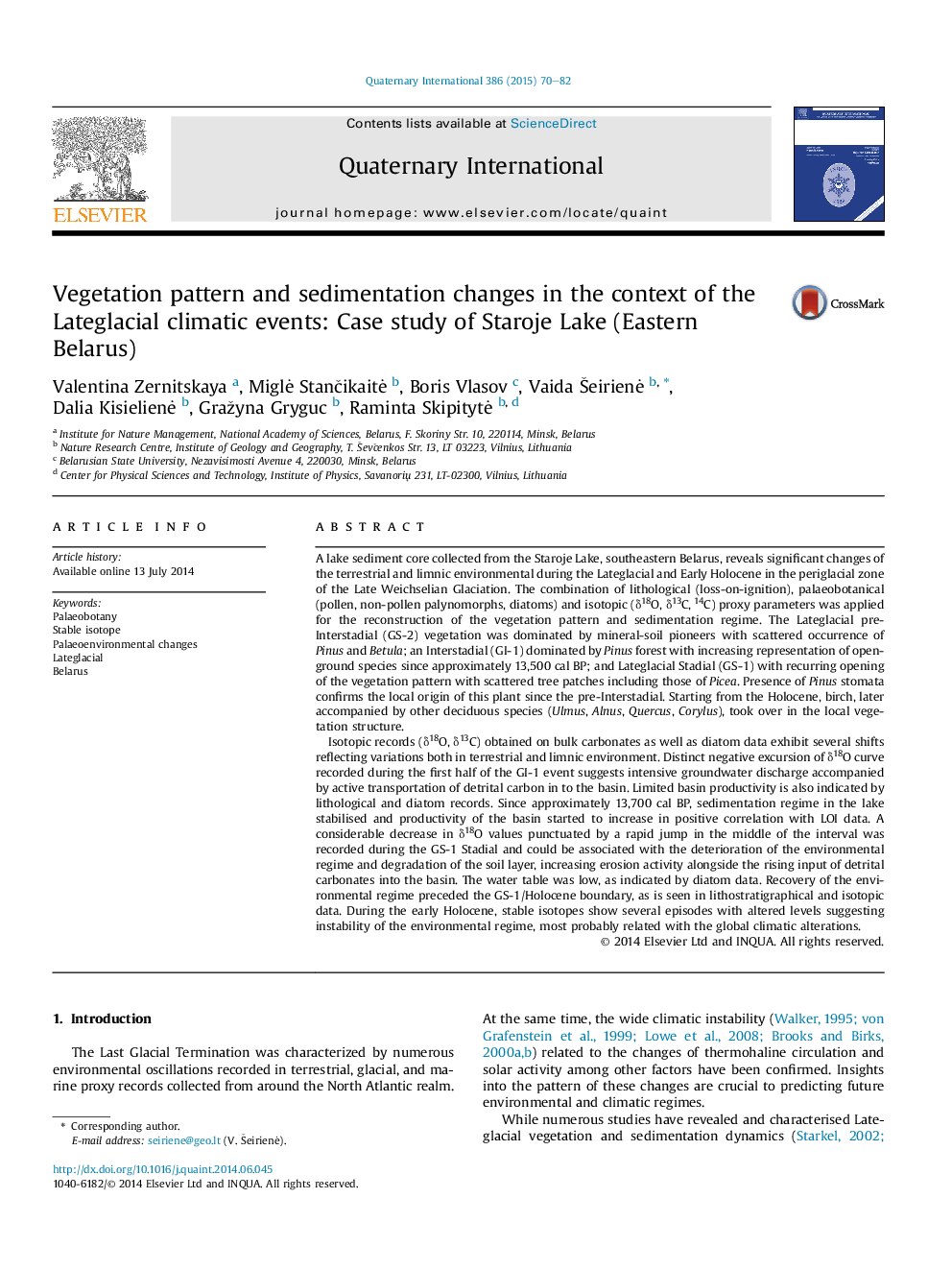| کد مقاله | کد نشریه | سال انتشار | مقاله انگلیسی | نسخه تمام متن |
|---|---|---|---|---|
| 1040457 | 1484112 | 2015 | 13 صفحه PDF | دانلود رایگان |

A lake sediment core collected from the Staroje Lake, southeastern Belarus, reveals significant changes of the terrestrial and limnic environmental during the Lateglacial and Early Holocene in the periglacial zone of the Late Weichselian Glaciation. The combination of lithological (loss-on-ignition), palaeobotanical (pollen, non-pollen palynomorphs, diatoms) and isotopic (δ18O, δ13C, 14C) proxy parameters was applied for the reconstruction of the vegetation pattern and sedimentation regime. The Lateglacial pre-Interstadial (GS-2) vegetation was dominated by mineral-soil pioneers with scattered occurrence of Pinus and Betula; an Interstadial (GI-1) dominated by Pinus forest with increasing representation of open-ground species since approximately 13,500 cal BP; and Lateglacial Stadial (GS-1) with recurring opening of the vegetation pattern with scattered tree patches including those of Picea. Presence of Pinus stomata confirms the local origin of this plant since the pre-Interstadial. Starting from the Holocene, birch, later accompanied by other deciduous species (Ulmus, Alnus, Quercus, Corylus), took over in the local vegetation structure.Isotopic records (δ18O, δ13C) obtained on bulk carbonates as well as diatom data exhibit several shifts reflecting variations both in terrestrial and limnic environment. Distinct negative excursion of δ18O curve recorded during the first half of the GI-1 event suggests intensive groundwater discharge accompanied by active transportation of detrital carbon in to the basin. Limited basin productivity is also indicated by lithological and diatom records. Since approximately 13,700 cal BP, sedimentation regime in the lake stabilised and productivity of the basin started to increase in positive correlation with LOI data. A considerable decrease in δ18O values punctuated by a rapid jump in the middle of the interval was recorded during the GS-1 Stadial and could be associated with the deterioration of the environmental regime and degradation of the soil layer, increasing erosion activity alongside the rising input of detrital carbonates into the basin. The water table was low, as indicated by diatom data. Recovery of the environmental regime preceded the GS-1/Holocene boundary, as is seen in lithostratigraphical and isotopic data. During the early Holocene, stable isotopes show several episodes with altered levels suggesting instability of the environmental regime, most probably related with the global climatic alterations.
Journal: Quaternary International - Volume 386, 2 November 2015, Pages 70–82